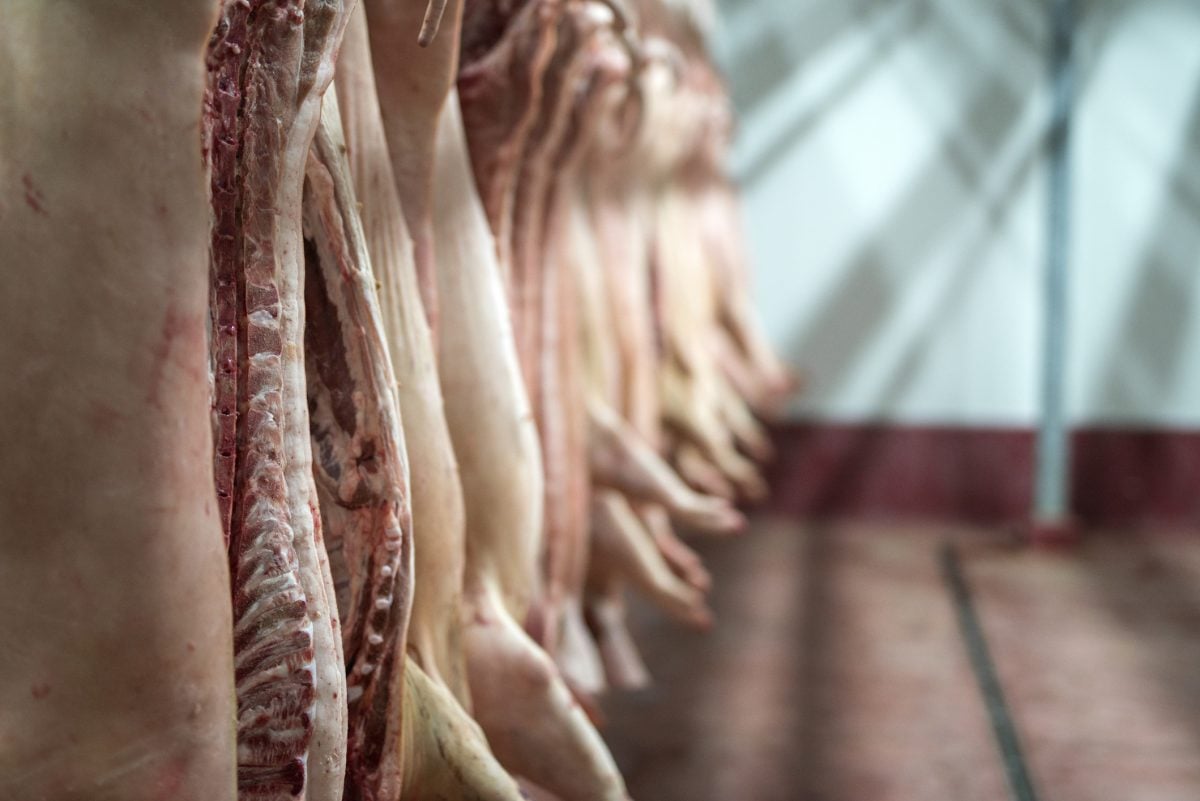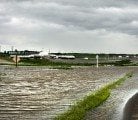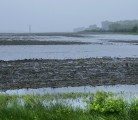By Rod Nickel
WINNIPEG, Manitoba, June 30 (Reuters) – Heavy weekend rains flooded large areas of Saskatchewan and Manitoba, causing evacuations of some small towns and submerging fields of wheat and canola.
The heaviest rain fell from Friday through Sunday in an area stretching some 480 kilometres eastward from Regina, Sask., to Portage la Prairie, Man. Many areas received 75 to 125 millimetres (3 to 4.9 inches) of rain, with a high of 200 mm recorded at Moosomin, Sask., said David Phillips, senior climatologist at the federal government’s Environment Canada.
“Normally, it’s good news, the crops need the water, but this time it’s been too much,” Phillips said.
Read Also

U.S. livestock: Cattle slip back, hogs gain
Chicago cattle futures slipped back on Friday after Thursday’s pause. Hog futures crept upward. Most-active December live cattle futures closed…
June was the wettest month on record for some areas of southeastern Saskatchewan and southwestern Manitoba, preventing some farmers from planting crops earlier this month.
The weekend floods caused evacuations of some towns, washed out country roads and closed some highways.
Worries about the rains boosted ICE Canada November canola futures by 0.6 percent to $470 per tonne in morning trading. (But prices fell later because of a bearish U.S. Department of Agriculture report that pegged soybean seeded area at a record 84.8 million acres a figure larger than expected. )
Canada is the world’s biggest canola producer and sixth largest wheat grower.
Most crops can survive three to five days in saturated soil, and some can last two to three days under water, said Pam de Rocquigny, cereal specialist for the Manitoba government. Cereal crops, other than barley, typically handle excessive moisture better than canola, she said.
It will take awhile to assess damage to crops based on their type, stage of development and amount of rainfall, she said.
The most vulnerable crops are those that farmers planted as recently as late May or early June, because their roots have not had time to expand enough to find oxygen in the soil, said Bruce Burnett, weather and crop specialist for grain marketing company CWB.
The rain will likely reduce yields to lower than average levels in some areas, although in regions that have been drier this year, lighter weekend rains could raise production, Burnett said.
In parts of the eastern Prairies, the oat crop is two to three weeks behind normal development and standing in water, said analyst Randy Strychar of Ag Commodity Research in a note to clients on Sunday. Canada is the biggest oat exporter.
Environment Canada forecast rains to continue on Monday in southern Saskatchewan into Tuesday in western Manitoba.
Temperatures are expected to warm up after that.
Environment Canada predicts above normal temperatures for Saskatchewan and Alberta and normal temperatures in Manitoba for July through September, which spans the crop development period and the harvest.
It sees normal to less than normal precipitation during that time, although Phillips cautions that rainfall is more difficult to predict than temperature.
Statistics Canada estimated on Friday that farmers planted less wheat and slightly more canola this year.




















